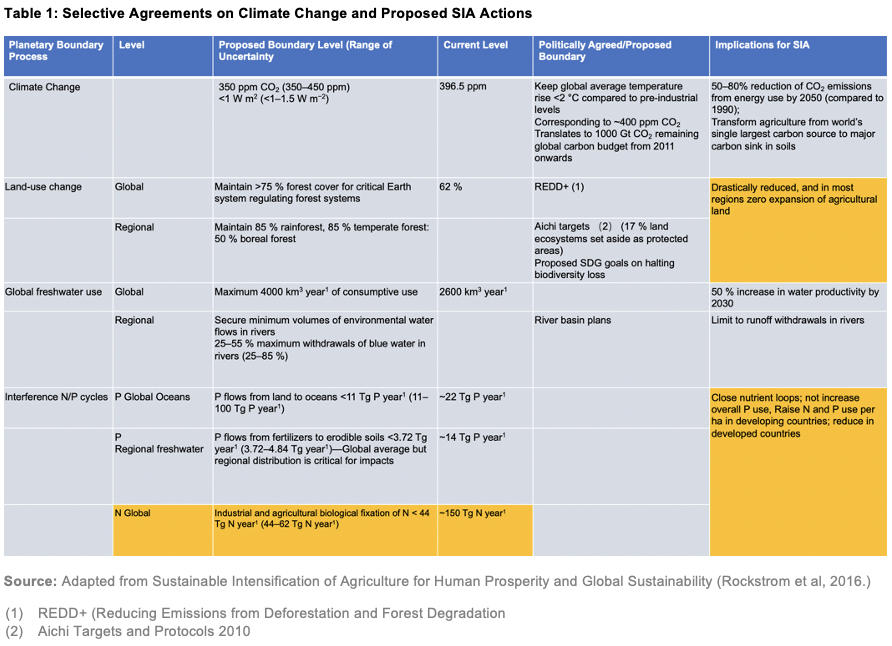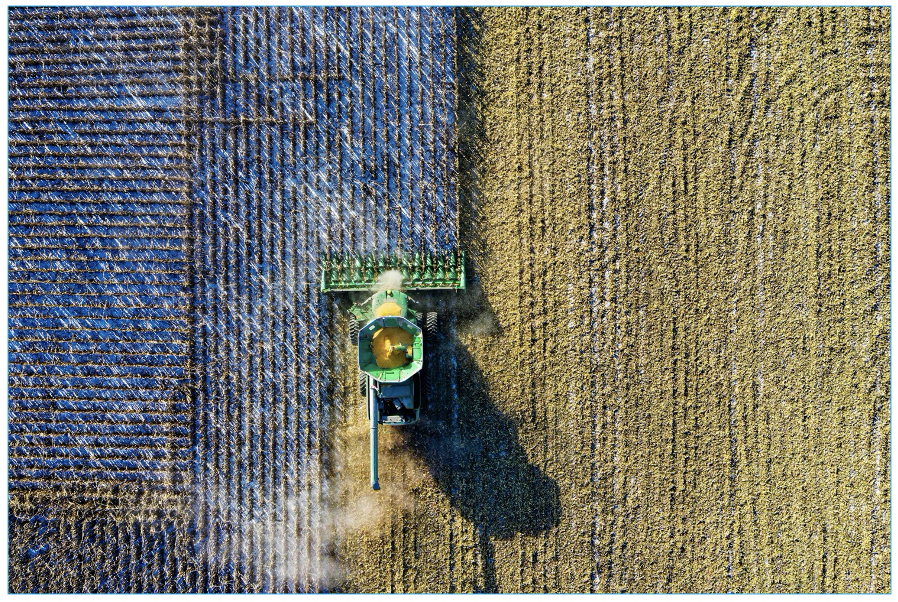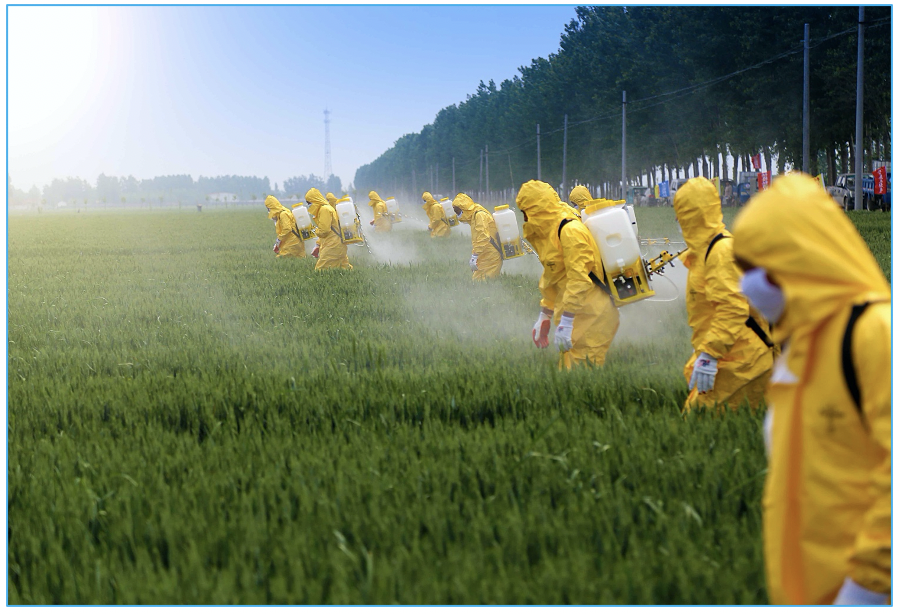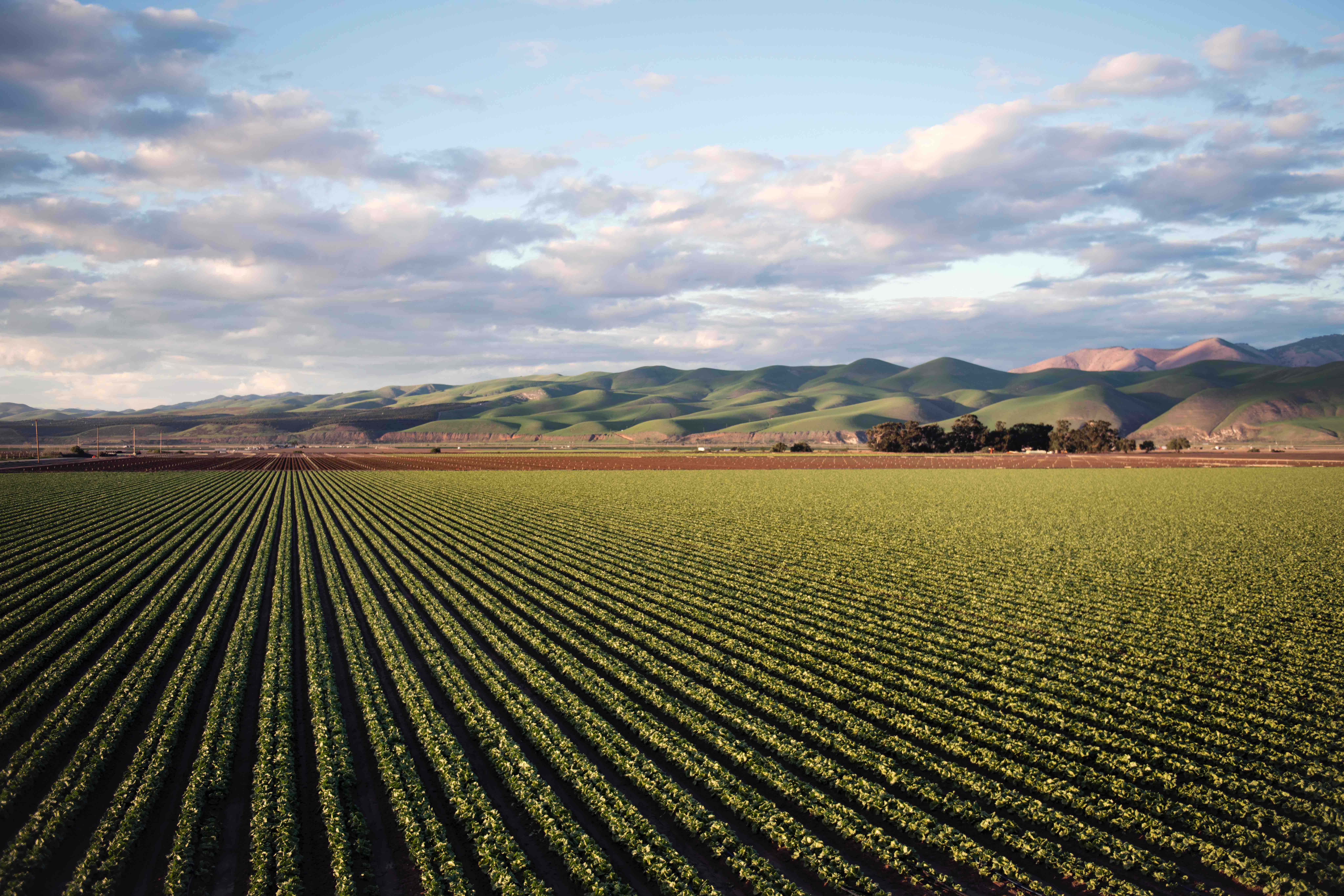
In the first two reports of this series, we placed Sustainable Agriculture (SA) in a global context and in relation to both global warming and the key greenhouse gases associated specifically with agriculture. We now introduce the concept of Sustainable Intensive Agriculture (SIA).
Sustainable Intensive Agriculture (SIA)
Ideas on SIA started to appear from around the late 1990s and were developed more extensively after a British Royal Society published a collection of articles in 2007, which consolidated existing thoughts from global contributors.
SIA came from the realisation that using conventional SA principles was not going to be sufficient to meet our future global food needs. As legal and moral agreements and frameworks developed, a new paradigm (SIA) began to fit into these.
Somehow, we have to produce more food without damaging our environment. Table 1 provides a summary of current agreements and their implications for SIA.

Looking at the proposed boundary levels and the politically agreed/proposed boundary, it is clear there is a huge amount of work to be accomplished. Reduction of global nitrogen usage is a good example. There are also many references in the Royal Society collection and in Table 1 to changes in infrastructure and the world beyond the individual farm. In SIA systems, farmers will likely be working less in isolation and become part of a more comprehensive management system.
SIA is a relatively new concept of 20 years of age and there is still controversy and debate over the exact direction it will take. In Table 1, the idea of reducing N and P usage in developing countries and increasing it in developing ones, perhaps by taxation or carbon credits and debits, to some will be unacceptable. Equally, if infrastructure changes are required, this could be used cynically to disenfranchise some farmers from their land. Another argument is “why bother to have protocols if they aren’t met?” Of the 20 Aichi biodiversity protocols set in 2010, none have so far been fulfilled (six or seven partially fulfilled). Some also argue that it is food distribution, particularly to poorer countries, rather than total food production, that is the more pressing issue.
Two important messages from Table 1 are that to meet these targets, not expanding land use for agriculture and maintaining forests are vital components. In the former, that doesn’t mean that marginal land at the edge of the farm can’t be used to improve biodiversity and drainage and this land can be better managed to help in an SIA strategy. Just no new land for agriculture!
Is SIA Possible and Scalable?
The answer to both questions is ‘probably, yes’ but it’s going to take every ounce of human ingenuity. The critical improvement in sustainable yields from SIA can come from many sources.
Direct Improvements from Improved Agricultural Practices
This is particularly important in SIA. One of the reasons is that if producers can’t continue to improve yields and their livelihoods, they may be tempted to increase production from virgin land, which defeats the environmental objectives.
Critics of organic farming often use this argument, where switching from conventional farming to organic can result in this creeping land expansion, especially if the premiums are insufficient to compensate for lost yield. Fortunately, there are many SIA methods available that work within the current productive land area.
A good example is zero or reduced tillage. By minimally cultivating the soil, greenhouse gas emissions are reduced, and soil erosion is cut by 40-90%. US farmers have been using these types of methods since the 1990s on maize (corn), building up an invaluable record. On the correctly selected soils, the evidence is conclusive: yields eventually increase by perhaps 3-4% on average.
This method is not universally suitable, and, on heavy clay soils, it can cause yield robbing soil compaction and, even on more conducive soils, the yield benefits often take up to a decade to materialise Weed control is also an issue.
This gives us a first clue that SIA is scalable (i.e. can be used on small or large farms). The average maize/corn farm in the US is around 300 hectares (750 acres) and nearly double the national average size of all farms.

Indirect Improvements Allowing Purchase of Better Raw Materials and Technology (etc.)
Evidence continues to emerge that farmers are using the derived extra income from better yields to invest in new technologies such as improved seeds, plant and animal genetics, precision agriculture, etc. We will be examining which extra farming expenditure is the most compatible with SIA in future reports.
Improved Infrastructure
This is one area where an individual or group of farmers can have an impact on their own situation, but a much larger picture is needed, particularly in relation to water management. This requires consideration of the whole hydrological system, such as watersheds and river basins. Water must be used more efficiently in, for example, the prevention of runoff and mitigation of extreme climatic events (flooding and droughts). These events are often caused by global warming, which presents the double and related challenges of mitigation of greenhouse gases and improved water management.
Improved infrastructure is another possible example of scalability because wealthier areas or countries with large farms may have more external financial resources to devote to water systems. Some of this work is definitely in the realm of governments. There is no point designing flood and drought mitigation systems if somebody upstream is controlling water flows by, for example, new dams or water diversion systems; something that happens all too frequently.
Another example of improved infrastructure is the reduction of food waste through improved transportation and better cold chain. This is the first time we have recognized the importance of a supply-chain from farmer to consumer and the connectivity of stakeholders, all implicit in SIA.
Management of Marginal Land for Both Production but Also Improved Synergetic Biodiversity
A key theme in SA and SIA is how field margins and other marginal land areas are managed. Introducing species (plants, insects and animals) on these will bring about improved biodiversity and potentially reduce the need for pesticides and other inputs and introduce other species that are beneficial to crop production. This is particularly important if farmers are growing GMO crops, which although improving yields, also tend to work in the opposite direction by reducing biodiversity.

Concluding Thoughts
There is no single solution. Diversity of thought and application is required.
However, SIA is already with us. In a paper published in August 2018, Global Assessment of Agricultural System Redesign for Sustainable Intensification, Nature Sustainability, (Pretty, et al.), the abstract makes the following observations:
“From 47 sustainable intensification initiatives at scale (each >104 farms or hectares), we estimate 163 million farms (29% of all worldwide) have crossed a redesign threshold, practising forms of sustainable intensification on 453 Mha of agricultural land (9% of worldwide total). We conclude that sustainable intensification may be approaching a tipping point where it could be transformative.”

Other Opinions You Might Be Interested In…


